China-Russia Flotilla Near Aleutians Prompts Calls For Naval Base In Alaska
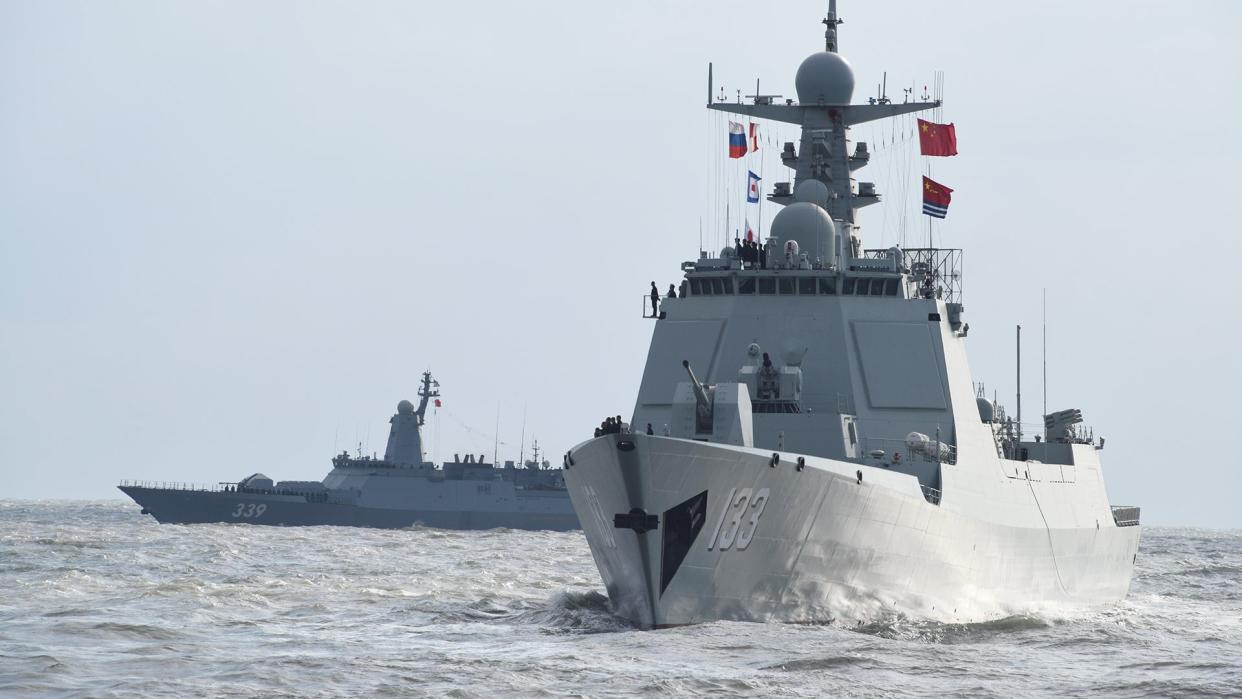
- Oops!Something went wrong.Please try again later.
A group of 11 Chinese and Russian navy vessels recently sailed near Alaska's Aleutian Islands in a display of cooperative force. Although those ships never entered U.S. territorial waters, they were shadowed by four U.S. Navy destroyers and a P-8 Poseidon maritime patrol plane.
The joint patrol, which is the largest to venture near Alaska, is the latest example of China and Russia's deepening military cooperation that is increasingly focused on the U.S. and its allies in the Pacific region. It has also bolstered calls for a permanent U.S. naval base in Alaska.
U.S. Senators Lisa Murkowski and Dan Sullivan (both R-Alaska) confirmed on Saturday that the joint Chinese and Russian flotilla of ships patrolled near the Alaskan coast last week. Although the location of where the ships sailed, near the Aleutian island chain in the Pacific, is known, it is unclear at present when precisely this occurred.
The joint task force of Chinese and Russian warships left Vladivostok on July 27. It is unclear if the patrol is still ongoing in the Pacific at present, although the ships now appear to have moved away from Alaska.
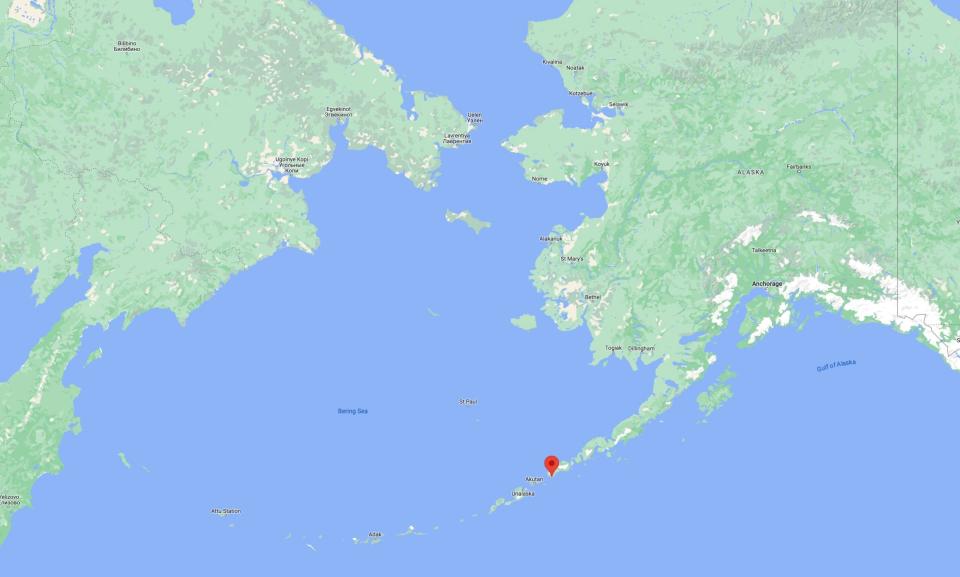
“We have been in close contact with leadership from Alaska Command for several days now and received detailed classified briefings about the foreign vessels that are transiting U.S. waters in the Aleutians,” Senator Murkowski stated over the weekend. “This is a stark reminder of Alaska’s proximity to both China and Russia, as well as the essential role our state plays in our national defense and territorial sovereignty.”
The precise identities of the 11 Chinese and Russian ships highlighted by the senators have not been released by U.S. officials. However, the task force of 10 ships that left Vladivostok in late July constituted a number of different vessel classes. According to USNI News, the Russian Navy’s portion of the force comprised the Udaloy class destroyers Admiral Panteleyev and Admiral Tributs, the Gremyashchiy class corvette by the same name, the Steregushchiy class corvette Aldar Tsydenzhapov, and the fleet tanker Pechenga.
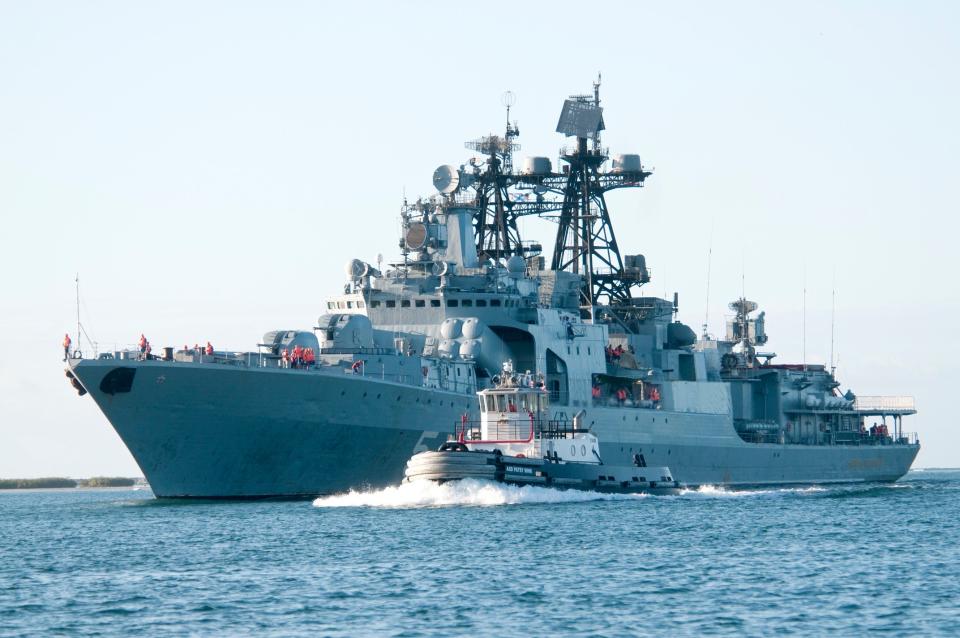
On the People’s Liberation Army Navy’s (PLAN) side, the Type 052D destroyers Guiyang and Qiqihar, the Type 054A frigates Zaozhuang and Rizhao, and the fleet oiler Taihu, were present.
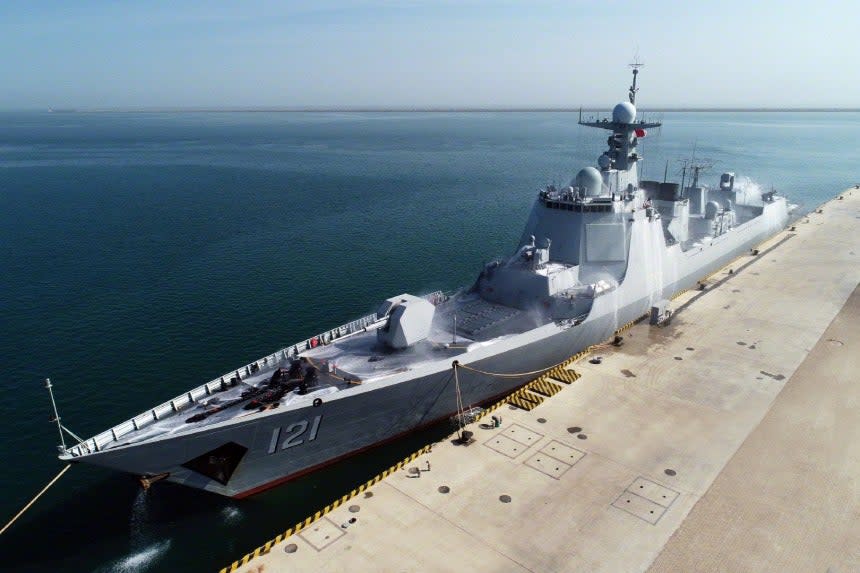
It is unclear at present whether the eleventh ship to make up the group was from the PLAN or the Russian Pacific Fleet.
According to comments made by a spokesman for the U.S. Northern Command to the Wall Street Journal, the 11 ship strong ship flotilla “remained in international waters and was not considered a threat.” However, four U.S. Navy destroyers, as well as a P-8 Poseidon maritime patrol plane, were dispatched to track their movements, the WSJ reports. This included the Arleigh Burke class destroyers USS John S. McCain, USS Benfold, USS John Finn, and USS Chung-Hoon.
The presence of the Sino-Russian task force had been known to U.S. military officials for some time. Speaking at the Aspen Security Forum last month, Admiral John Aquilino, commander of the United States Indo-Pacific Command, stated that, “Today [i.e., late July], a Russian and Chinese maritime Task Force is doing a combined patrol. We'll see where that ends up, whether it's off the Aleutian Islands, whether it's in the Philippine Sea, whether it goes to Guam, whether it goes to Hawaii or whether it goes off the west coast of the United States.” USS Benfold and John Finn specifically began shadowing the Russian-Chinese flotilla from at least July 31, per USNI News.

After departing Vladivostok on July 27, the 10 Chinese and Russian ships patrolled near Japan before sailing through La Perouse Strait from the Sea of Japan to the Sea of Okhotsk between July 28-29. Earlier in July, Chinese and Russian naval vessels conducted joint naval and air drills in the Sea of Japan.
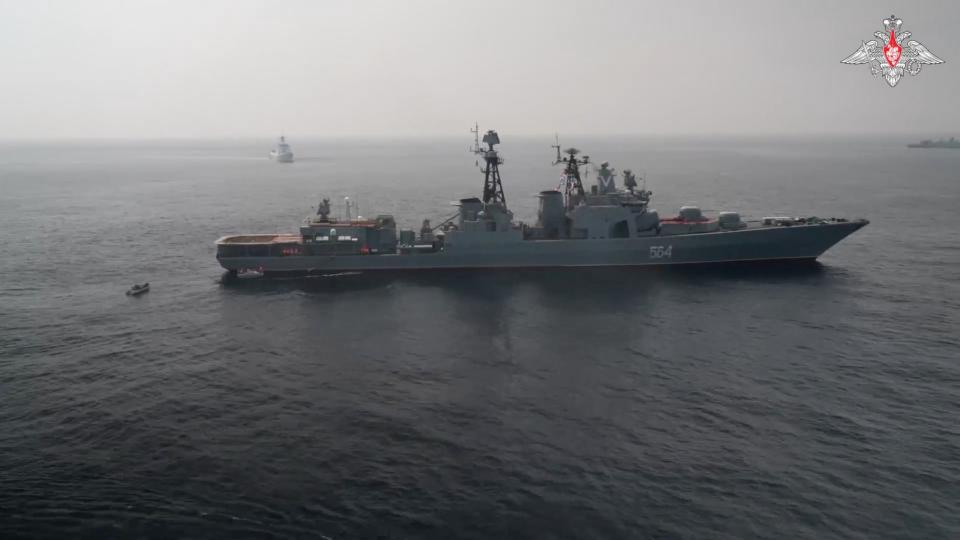
Counter to the strong words of Senator Murkowski regarding the significance of the Russian and Chinese vessels' presence near Alaska, a spokesperson from the Chinese embassy in Washington recently refuted any claims that the country's navy was trying to target the U.S.
“According to the annual cooperation plan between the Chinese and Russian militaries, naval vessels of the two countries have recently conducted joint maritime patrols in relevant waters in the western and northern Pacific Ocean. This action is not targeted at any third party and has nothing to do with the current international and regional situation,” the spokesperson said.
The Russian Pacific Fleet maintains that the various drills conducted by Chinese and Russian navy vessels in the Pacific have been squarely aimed at “strengthening the naval cooperation between Russia and China, maintaining peace and stability in the Asia-Pacific region, monitoring of offshore zones and guarding Russia and China’s objects of maritime economic activities.”
When asked about the news by reporters on Monday, Pentagon Press Secretary Brig. Gen. Pat Ryder said the following: "I'll let the Chinese and the Russians characterize their activities. What I would say is that NORAD and NORTHCOM monitored their presence. They were in international waters. We will continue to monitor but I think that it's no surprise to anyone that China and Russia continue to look at ways to cooperate. And we'll continue to monitor the situation and follow up on that."

Russia and China have continued to tighten their military relationship through joint exercises and patrols in recent years. While the Indo-Pacific is of paramount strategic interest for China, with Beijing laying claim to almost the entirety of the South China Sea, as well as the Taiwan Straight, Russia remains locked in a disagreement with the Japanese authorities over the Kuril Islands. It is also likely that Russia's continued commitment to Pacific drills has been fueled by its desire to project power outside the context of Ukraine.
Last year, at least four Chinese and 16 Russian naval vessels sailed around Japan's home islands and other areas under Japanese control. This followed a similar exercise in 2021, which saw a group of 10 Chinese and Russian ships conduct joint operations around a significant portion of Japan's home islands.
Beyond the two countries' naval operations, Chinese and Russian long-range bombers have also conducted joint patrols over the Sea of Japan and the East China Sea in the recent past. The joint patrols, which took place last year, also saw Russian and Chinese aircraft landing on each other’s airfields.
Of course, the U.S. has had to react to many instances of Russian and Chinese ships and even submarines operating close to its national waters around Alaska. Russia's sovereign territory is located just across the Bering Sea from Alaska, so their naval activities in this area are not rare.
Just last year, the U.S. Coast Guard encountered the PLAN Type 055 destroyer Renhai, as well as two other Chinese naval vessels and four Russian ships, sailing approximately 75 nautical miles north of Kiska Island, one of the Rat Islands in the Pacific. Other sightings of PLAN vessels off Alaska occurred prior to this, too. In 2021, the U.S. Coast Guard shadowed a group of four Chinese warships sailing in America's Exclusive Economic Zone near Alaska's Aleutian Islands.
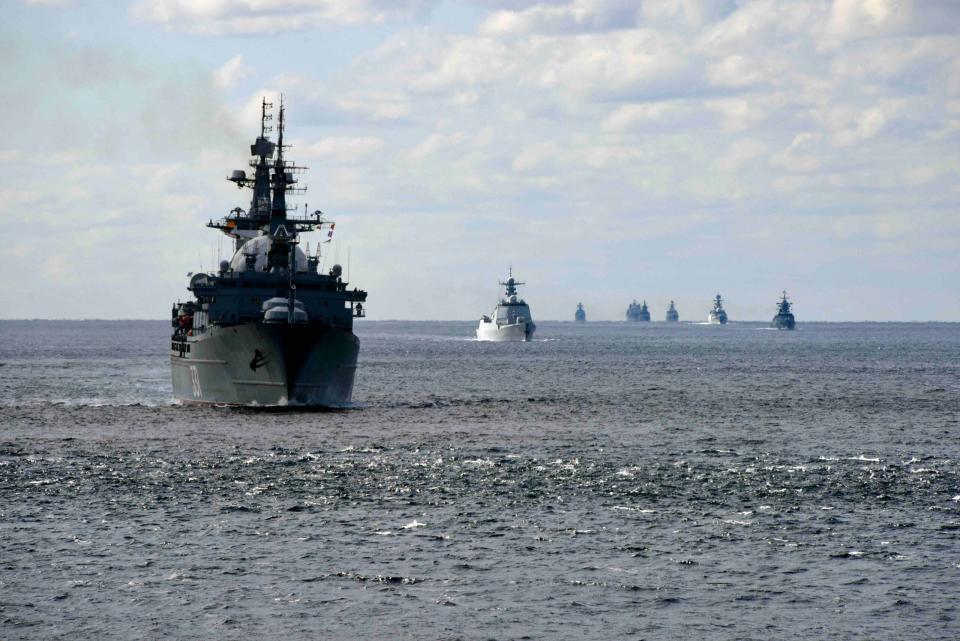
Moreover, in 2019, one of the PLAN’s six Type 815 North Star electronic intelligence-gathering vessels, China's most advanced spy ships, arrived in international waters near Alaska. As we posited at the time, the deployment of that vessel came at the same time as the U.S. military’s Missile Defense Agency and numerous partners conducted the first-ever test of the Terminal High Altitude Air Defense (THAAD) ballistic missile defense system against a mock intermediate-range ballistic missile (IRBM) from the Pacific Spaceport Complex Alaska in Kodiak.
It should also be stressed that the U.S. Navy also frequently conducts operations, some of which are massive in scale, near what could be deemed potential adversary countries' shores. Beyond that, freedom of navigation operations, or FONOPs, can see U.S. and allied ships sailing very close to Chinese territorial claims. So it isn't like the U.S. doesn't operate in a similar manner regularly, too.
However, the recent presence of Chinese and Russian ships close to American territory has added weight to calls for the U.S. to establish a permanent naval base in Alaska. While the U.S. Air Force has multiple sprawling bases in Alaska, there is currently no permanent base from which to station naval vessels there. A permanent U.S. Navy surface combatant presence in Alaska would be especially useful for situations such as those which unfolded last week.
https://twitter.com/JerryHendrixII/status/1688162081663504384?s=20
Senator Sullivan in particular has been a vocal advocate for better resources to host Navy assets in Alaska, with a view towards boosting the number of U.S. Navy vessels in the highly strategic Arctic Circle to the north of the state. This is an area that has seen increasing Chinese maritime activity, as well as a ballooning Russian military presence as of late. The U.S. is also working to orient more of its forces towards this increasingly competitive region as new shipping routes emerge due to receding ice.
“The incursion by 11 Chinese and Russian warships operating together – off the coast of Alaska – is yet another reminder that we have entered a new era of authoritarian aggression led by the dictators in Beijing and Moscow," Sullivan said of the recent disclosure.
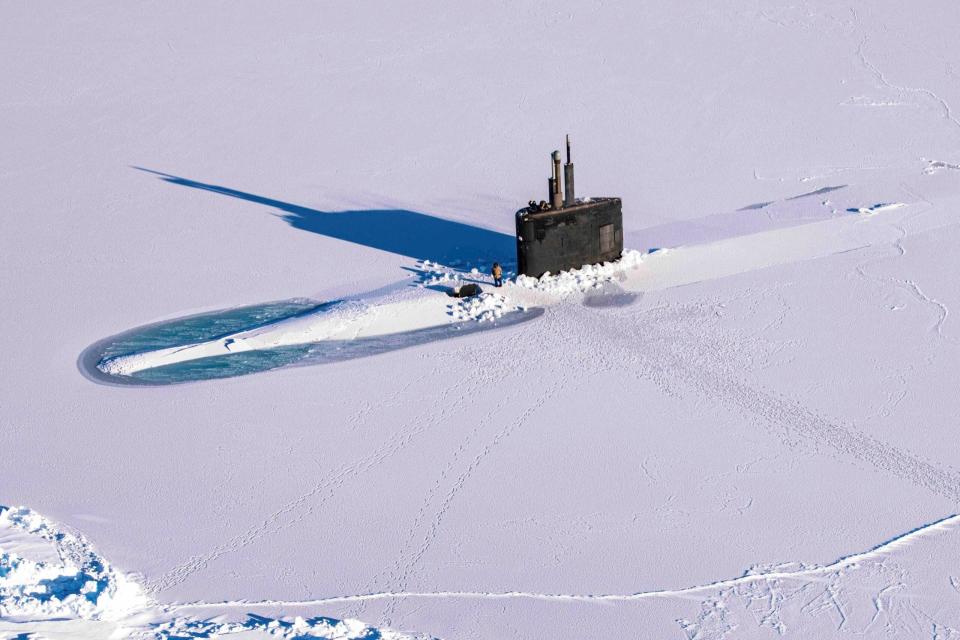
"In recognition of this reality and our state’s unrivaled strategic location, for years, I’ve been pressing the Navy and each successive administration to commit to a greater Naval, Coast Guard, and Marine Corps presence in Alaska, more Arctic-capable vessels, and more infrastructure to host these assets, like the deep-water port of Nome."
While the joint Russian-Chinese flotilla that brushed up against Alaska certainly wasn't new, it is another reminder of solidifying alliances in an increasingly tense region and the PLAN's ever expanding 'blue water' capabilities.
Contact the author: oliver@thewarzone.com

